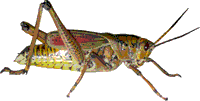Entomology Collections, General

Entomology Papers from Other Sources
Document Type
Article
Date of this Version
2005
Abstract
When females are inseminated by multiple males, male paternity success (sperm precedence) is determined by the underlying processes of sperm storage and sperm utilization. Although informative for many questions, two-male sperm competition experiments may offer limited insight into natural mating scenarios when females are likely to mate with several males. In this study, genetic markers in Tribolium castaneum are used to trace paternity for multiple sires, and to determine whether displacement of stored sperm that occurs after a third mating equally affects both previous mates, or if fertilizations are disproportionately lost by the female’s most recent mate. For 20 days after triple-matings, first males retain significantly higher paternity success (relative to first male paternity in double-matings) compared with second males. These results demonstrate that when females remate before sperm mixing occurs, sperm stratification results in differential loss of sperm from the most recent mate. This study provides insight into the mechanisms underlying sperm precedence in a promiscuous mating system, and suggests that T. castaneum females could limit paternity success of particular mates by remating with more highly preferred males.


Comments
Published in Physiological Entomology (2005) 30, 303–307.